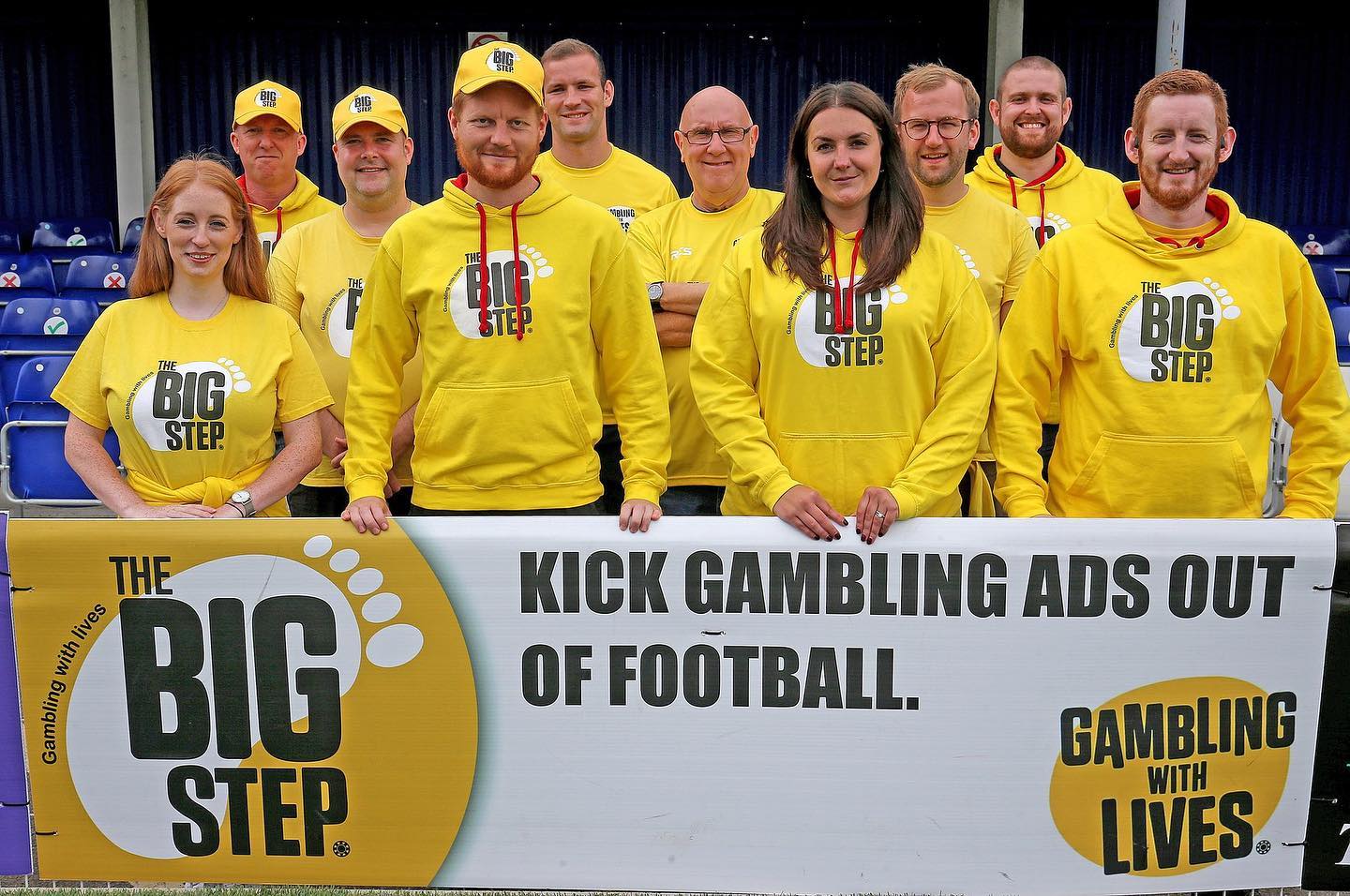Spoiler alert: the answer is yes. To find out why and how, read on.
Words by Tom Fleming
Money. It forms the basis of the most common argument we hear when a potential ban on gambling sponsorship in football is discussed – “but what about the money that gambling sponsorship brings in? Football can’t survive without it!”.
Of course, money is an integral part of the game, but how much would a gambling sponsorship ban actually affect football?
The world’s most popular sport
Firstly, it’s important to remember the football is the most popular – and watched – sport in the world, with around four billion fans. That’s over half the global population.
The Premier League is the most-watched league in the world and, according their website, is broadcast to 212 territories and 643 million homes, with a potential annual TV audience of 4.7 billion.
This is important because football provides companies with a unique platform to advertise their products on. Put simply, football is too big to fail – if gambling companies were banned from sponsoring football shirts, there would be no shortage of non-gambling companies to step in and fill the shortfall. When tobacco companies were banned from sponsoring Formula One and snooker, both sports continued to thrive, with non-gambling companies replacing the lost revenue.
What would a sponsorship ban actually cost?
A recent Peers for Gambling Reform (PGR) report found that a ban would cost the English Football League – the Championship, League One and League Two – £26 million. Whilst that may sound like a lot of money, in context, it is £48 million less than Chelsea paid for Kai Havertz (£74 million) in 2020.
The report found:
“The sport leagues and teams we have assessed are unlikely to be significantly harmed by a ban on direct sponsorship, as gambling sponsorship revenue is a small revenue source relative to the total, and non-gambling sponsors exist to fill any gap created […] There is potential for at least partial replacement from non-gambling sponsorship, which many teams already obtain. We estimate that the English Football league could lose £26 million […] equal to 2.5 percent […] of annual revenue”
This 2.5 percent shortfall exists because gambling companies are able to pay around 50 percent more than non-gambling companies to secure sponsorship deals. However, when the wider public health benefits are weighed against such a relatively small loss, it’s a small price to pay – football can, and will, thrive without gambling money.
Away from the EFL, following Fulham’s relegation to the Championship, West Ham are the only Premier League team sponsored by a UK-based gambling company (Betway). This deal is thought to be worth around £10 million to the club, who reported pre-COVID revenue of £216 million in 2018/19. If they were to replace Betway with a sponsor that paid 50 percent less (£5 million), the loss would also represent a 2.5 percent decline in revenue. By way of comparison, West Ham’s most-expensive player, Sebastian Haller, cost them £45 million in 2019. Their highest-paid player, Andriy Yarmolenko, reportedly makes over £115,000 a week.
Financial benefits
However, there are financial benefits associated with a gambling sponsorship ban too. At the end of the 2019–20 season, Everton and Aston Villa ditched their gambling shirt sponsors (SportPesa and W88). Both clubs signed deals with Cazoo, a digital car sales platform, to become their main shirt sponsor, which led to a 60 percent rise in shirt sales for Everton and a 50 percent rise for Aston Villa. Although such a rise in shirt sales would be unlikely to cover the entire 2.5 percent shortfall, this example highlights the potential opportunities that could arise from any ban.
Players’ wages
One area that could take the comparatively small financial hit is the players’ wages. For the 2018/19 season, the average wage-turnover ratio in the Championship was 107%, with Reading at 226 percent. Experts reason that a wage-turnover ratio of 60 percent is sustainable, while anything above 90 percent is unsustainable. In the Premier League, Gareth Bale was highest-paid player in the 2020/21 season, earning a reported £600,000 a week.
Mark Palios, Tranmere Rovers chairman, told a Parliamentary review in March 2021 that: “In our case, shirt sponsorship income might be £100,000 in a budget of £1.5m, so it’s not massive and it’s not a zero-sum game. Clubs can find other sponsors to replace what they have already.” He also said that the “thirst to spend more money was because player wages are out of control.”
The wider societal cost of gambling
Furthermore, the PGR report highlighted the wider societal costs of gambling harm, suggesting that it costs country up to £1.2 billion each year and that if the potential sponsorship ban was effective in reducing harmful gambling activity, some of these costs could be reduced. The report concluded:
- The economy could add up to 30,000 new jobs and £400 million in employee earnings as revenue is diverted to more labour-intensive industries.
- The Exchequer could be revenue neutral, while still substantially increasing expenditure on Research, Education and Treatment of gambling-related harm.
- Government could achieve further fiscal savings in healthcare, unemployment, homelessness and incarceration costs if the reforms are successful in reducing the prevalence of gambling-related harm.
The findings of the PGR report are echoed by numerous other studies into the economic impact of gambling, including this 2021 report by the Social Market Foundation.
In conclusion
There is more than enough money in football without having to promote gambling through the sport. If the only argument for advertising addictive products in front of children is a financial one, we now know, beyond reasonable doubt, that the reduction in revenue wouldn’t be significant.
To millions of young football fans, the public health benefits of removing gambling sponsorship would be huge and 2.5% of revenue is a price well worth paying.


